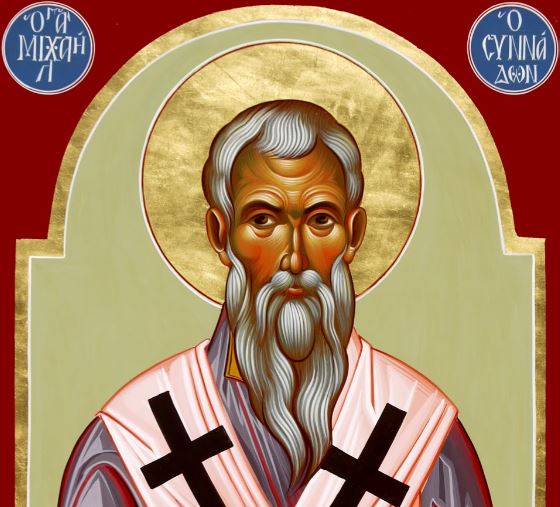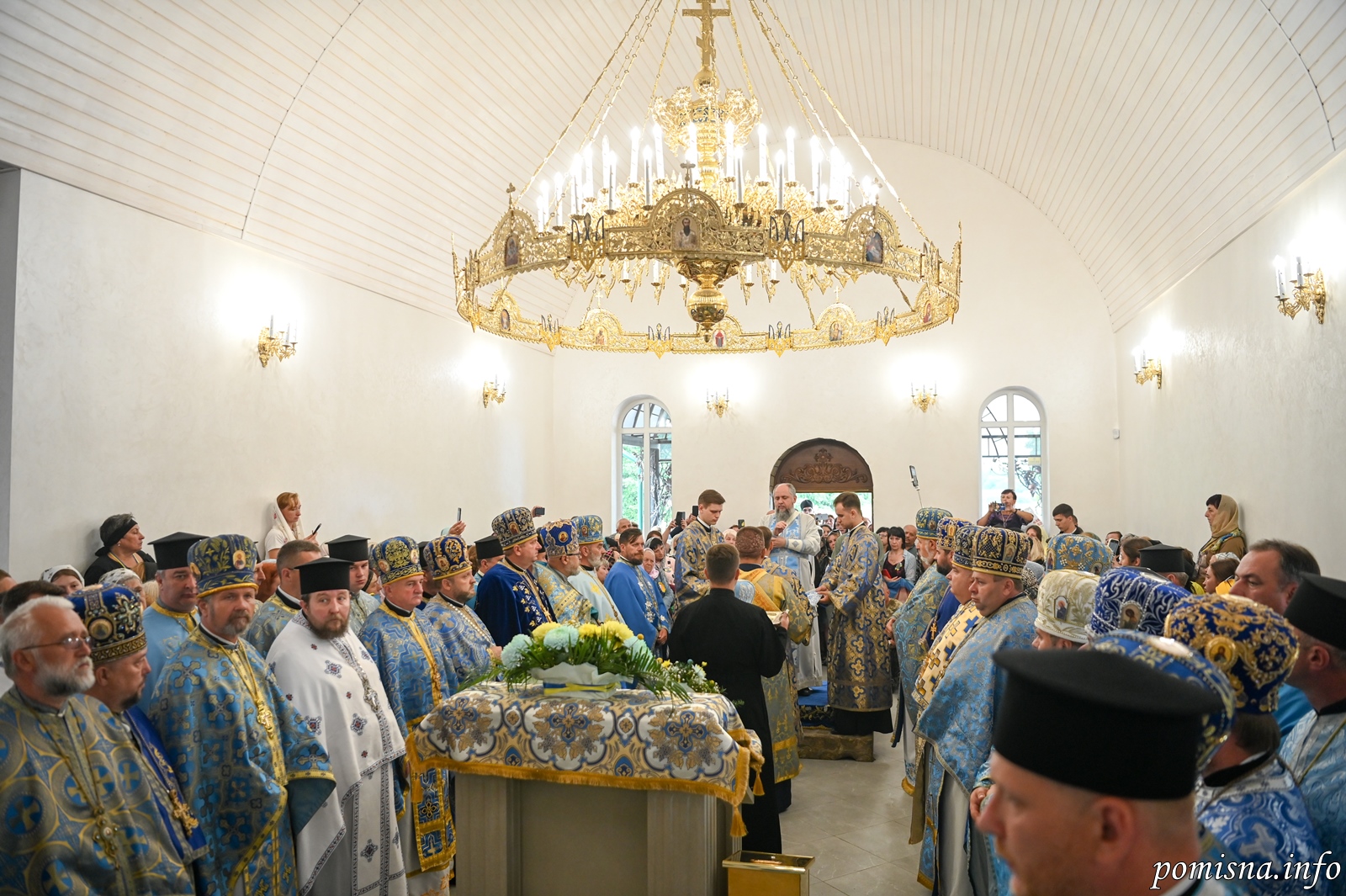Saint Michael the Confessor, Bishop of Synnada (23 May)


Saint Michael the Confessor From his youth he longed for the monastic life and was sent by Patriarch Tarasius (784-806) to a monastery on the coast of the Black Sea. Saint Theophylactus (March 8), the future Bishop of Nicomedia also entered the monastery together with him.
At the monastery both monks engaged in spiritual struggles and were soon glorified by gifts from the Lord. Once, during a harvest, when the people were weakened by thirst, an empty metal vessel was filled with water by the prayer of the monks.
Patriarch Tarasius consecrated Saint Michael as bishop of the city of Synnada. Through his holy life and wisdom, Saint Michael won the love of believers, and the notice of the emperors Nikēphóros I (802-811) and Michael I Rangabe (811-813). Saint Michael was present at the Seventh Ecumenical Council at Nicea in 787.
When the Iconoclast heretic Leo the Armenian (813-820) assumed the throne, he began to expel Orthodox hierarchs from their Sees, appointing heretics in their place.
Saint Michael defended Orthodoxy, bravely opposing the heretics and denouncing their error. Leo the Armenian brought Saint Michael to trial, but not fearing torture he answered resolutely, “I venerate the holy icons of my Savior Jesus Christ and the All-Pure Virgin, His Mother, and all the saints, and it is to them I bow down. I shall not obey your decrees to remove icons from churches.”
Leo then banished Saint Michael to the city of Eudokiada, where the confessor died about the year 821. The head of Saint Michael is preserved in the Great Lavra of Saint Athanasius on Mount Athos, and part of the relics are at the Ivḗron monastery.
This Saint was from Synnada in Phrygia of Asia Minor. In Constantinople he met Saint Theophylact (see Mar. 8); the holy Patriarch Tarasius, learning that Michael and Theophylact desired to become monks, sent them to a monastery on the Black Sea. Because of their great virtue, Saint Tarasius afterwards compelled them to accept consecration, Theophylact as Bishop of Nicomedia, and Michael as Bishop of his native Synnada. Because Saint Michael fearlessly confessed the veneration of the holy icons, he was banished by the Iconoclast Emperor Leo V the Armenian, who reigned from 813 to 820. After being driven from one place to another, in many hardships and bitter pains, Saint Michael died in exile.
Michael, a holy and learned hierarch, dedicated himself to the service of Christ from early childhood. Together with St. Theophylactus of Nicomedia, he lived a life of asceticism. At one time during a period of drought, these two saints brought forth abundant rain on the earth by their prayers. Because of his ascetic and chaste life from his early youth, he was chosen and consecrated bishop of Synnada by Patriarch Tarasius. He participated in the Seventh Ecumenical Council [Nicaea, 787 A.D.]. At the request of the emperor, he went to Caliph Harun-al-Rashid to conduct negotiations for peace. During the reign of the nefarious Leo the Armenian, Michael was removed from his episcopal throne because of his veneration of icons and was sent into exile. There, in misery and poverty but in faithfulness to Orthodoxy, he reposed in the year 818 A.D. and took up his habitation in the Kingdom of Christ the King.
Apolytikion of Michael, Bp. Of Synnada
Plagal of the Fourth Tone
You are a guide of Orthodoxy, a teacher of piety and modesty, a luminary of the world, the God inspired pride of monastics. O wise Michael, you have enlightened everyone by your teachings. You are the harp of the Spirit. Intercede to Christ our God for the salvation of our souls.
Kontakion of Michael, Bp. Of Synnada
Fourth Tone
Having dawned upon the world like a great daystar, thou dost shine upon all men with thy great virtues as with light and with the rays of thy miracles, namesake of Angels and worker of miracles.
Source: oca.org / goarch.org / westserbdio.org




